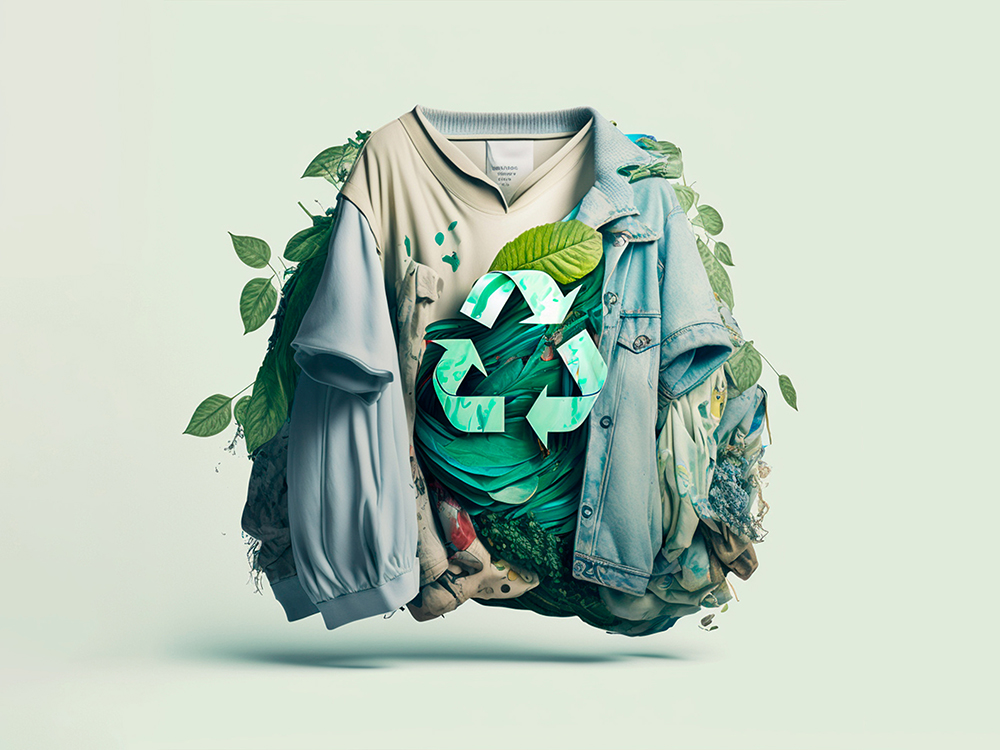The textile industry is one of the largest polluters in the world, with the production of clothing and other fabrics contributing to environmental degradation, water pollution, and waste management issues. However, with the growing awareness of the need for sustainability, the industry is shifting towards eco-friendly textiles that minimize harm to the environment. In this article, we will explore the world of eco-friendly textiles, their benefits, and how they are changing the face of the fashion industry.

What are Eco-Friendly Textiles?
Eco-friendly textiles, also known as sustainable textiles, are fabrics made from materials that are environmentally friendly, sustainable, and minimize harm to the environment. These textiles are designed to reduce the impact of the textile industry on the environment, from the production process to the end-of-life of the product. Eco-friendly textiles can be made from natural fibers such as organic cotton, hemp, and bamboo, or from recycled materials such as plastic bottles and old clothing.
Benefits of Eco-Friendly Textiles
The benefits of eco-friendly textiles are numerous. Some of the most significant advantages include:
- Reduced Water Pollution: Eco-friendly textiles require less water to produce, and the production process generates less wastewater, reducing the impact on water pollution.
- Lower Carbon Footprint: Sustainable textiles reduce the carbon footprint of the textile industry, as they require less energy to produce and transport.
- Conservation of Natural Resources: Eco-friendly textiles promote the conservation of natural resources, such as water, soil, and air, by reducing the demand for virgin materials.
- Reduced Waste: Sustainable textiles can be designed to be recyclable, reusable, or biodegradable, reducing the amount of waste generated by the textile industry.
- Improved Health and Safety: Eco-friendly textiles are often made from natural materials, which can improve health and safety for consumers, as they are less likely to cause skin irritation or allergic reactions.
Types of Eco-Friendly Textiles
There are several types of eco-friendly textiles available, including:
- Organic Cotton: Grown without the use of toxic pesticides or synthetic fertilizers, organic cotton is a popular choice for eco-friendly textiles.
- Hemp: A highly durable and versatile crop, hemp requires less water and pesticides than traditional cotton.
- Bamboo: Bamboo is a highly renewable resource that requires minimal water and pesticides to produce.
- Recycled Polyester: Made from recycled plastic bottles, recycled polyester reduces waste and conserves natural resources.
- Tencel: A sustainable form of lyocell fiber, Tencel is made from wood pulp cellulose and has a lower environmental impact than traditional fibers.
Innovations in Eco-Friendly Textiles
The textile industry is constantly innovating, and eco-friendly textiles are no exception. Some of the latest innovations include:
- Plant-Based Dyes: Plant-based dyes are a natural and sustainable alternative to synthetic dyes, reducing the environmental impact of the dyeing process.
- 3D Printing: 3D printing technology is allowing designers to create complex textiles with minimal waste and reduced material usage.
- Biodegradable Fabrics: Biodegradable fabrics, such as those made from mushroom-based materials, are being developed to reduce waste and promote sustainability.
- Upcycled Textiles: Upcycled textiles, made from recycled materials such as old clothing and plastic bags, are reducing waste and promoting creative reuse.
Challenges and Limitations
While eco-friendly textiles offer many benefits, there are also challenges and limitations to their adoption. Some of the most significant challenges include:
- Higher Cost: Eco-friendly textiles can be more expensive to produce, making them less competitive in the market.
- Limited Availability: Eco-friendly textiles may not be as widely available as traditional textiles, making it difficult for designers and consumers to access them.
- Performance and Quality: Eco-friendly textiles may not have the same performance and quality as traditional textiles, which can be a barrier to adoption.
- Certification and Labeling: The certification and labeling of eco-friendly textiles can be confusing and inconsistent, making it difficult for consumers to make informed choices.
FAQs
- What is the difference between organic and conventional cotton?
Organic cotton is grown without the use of toxic pesticides or synthetic fertilizers, while conventional cotton is grown using these chemicals. - Are eco-friendly textiles more expensive?
Yes, eco-friendly textiles can be more expensive to produce, but the cost is often offset by the benefits of sustainability and reduced environmental impact. - How can I identify eco-friendly textiles?
Look for certifications such as GOTS (Global Organic Textile Standard) or Oeko-Tex, which ensure that textiles meet certain environmental and social standards. - Can eco-friendly textiles be recycled?
Yes, many eco-friendly textiles can be recycled, reducing waste and promoting sustainability. - Are eco-friendly textiles durable?
Yes, many eco-friendly textiles are highly durable and can be designed to last longer than traditional textiles.
Conclusion
Eco-friendly textiles are a vital step towards sustainable fashion, reducing the environmental impact of the textile industry while promoting social responsibility. While there are challenges and limitations to the adoption of eco-friendly textiles, the benefits of sustainability, reduced waste, and improved health and safety make them an attractive choice for designers, consumers, and businesses. As the industry continues to innovate and evolve, we can expect to see more eco-friendly textiles on the market, making it easier for consumers to make sustainable choices. By choosing eco-friendly textiles, we can all play a role in reducing the environmental impact of the textile industry and promoting a more sustainable future for fashion.
Closure
Thus, we hope this article has provided valuable insights into Eco-Friendly Textiles: A Step Towards Sustainable Fashion. We appreciate your attention to our article. See you in our next article!